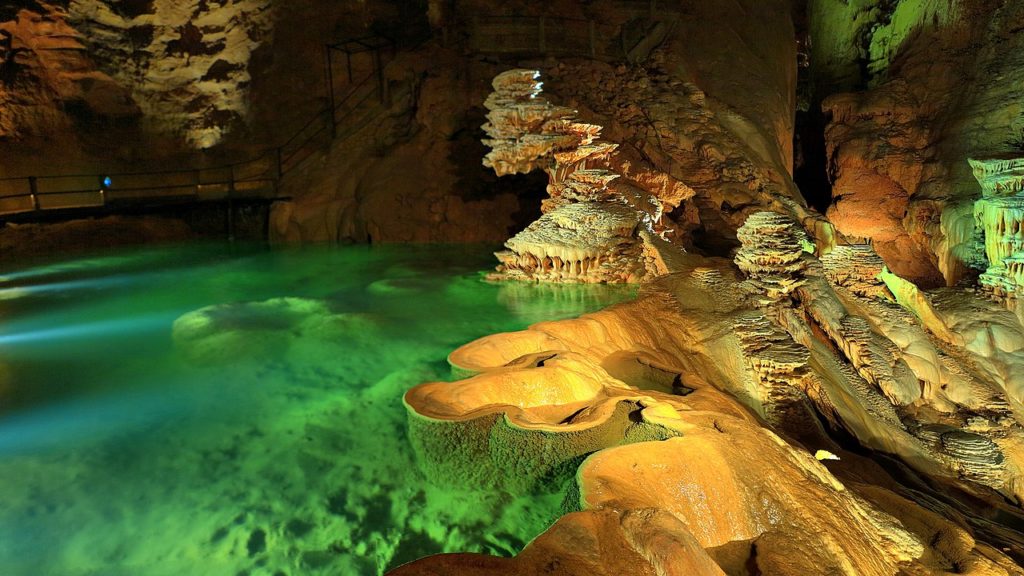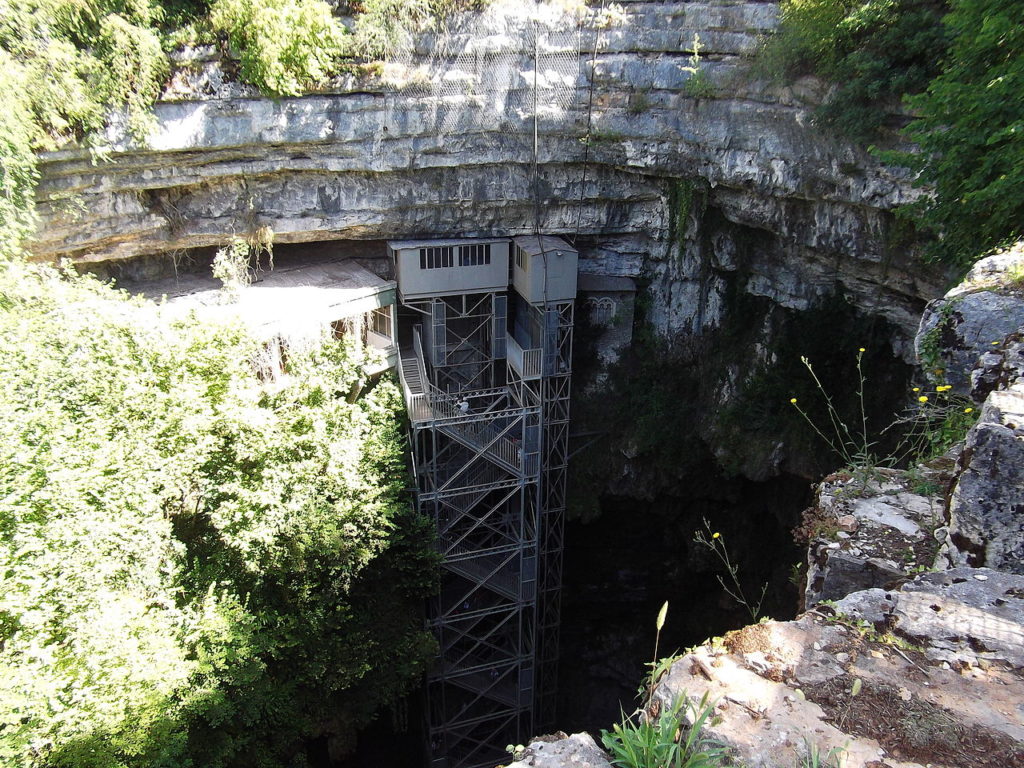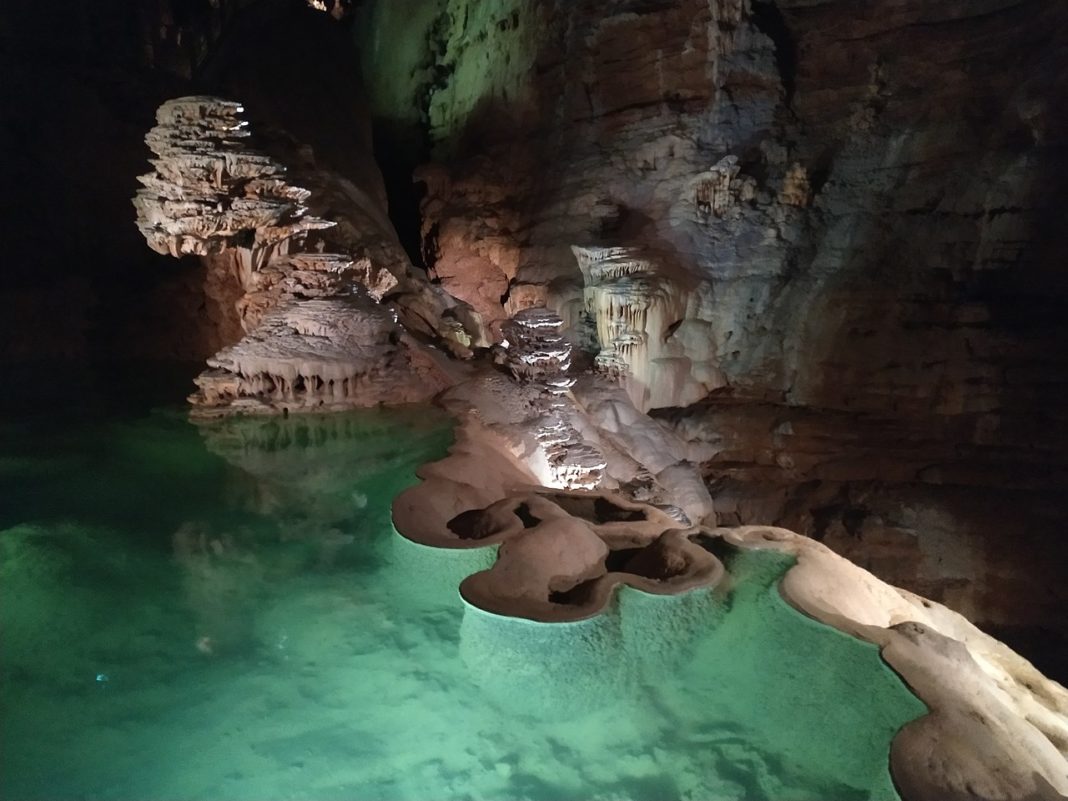The Padirac Chasm (French: Gouffre de Padirac) is a natural cave system located near Gramat, in the Lot department, Occitanie region, France. It is the most frequently visited underground tourism facility in France, with more than 350,000 visitors annually.

The Padirac Chasm was formed millions of years ago by the erosion of water. The subterranean river continues to erode the cave system, and new formations are constantly being created. The chasm was created at an undetermined point in time when the roof collapsed into a large internal cavern.

It is known that the cavern existed in the 3rd century and was inhabited during the 15th and 16th centuries when potassium nitrate was excavated from the area. The cave was first explored in 1889 by Édouard-Alfred Martel, a French speleologist. It was opened to the public in 1928.

The chasm is 103 meters deep and with a diameter of approximately 33 meters. It is accessible by a 75-meter descent by lift or stairs. Visitors can then explore the chasm system on foot and by boat.

The cave system is home to a variety of stalactites and stalagmites, as well as a subterranean river. The river flows through a series of chambers and galleries, including the Great Hall, which is 140 meters long and 60 meters high. It is regarded as one of the most extraordinary natural phenomena of the Massif Central.

The Padirac Chasm is a popular tourist destination. It is also a popular spot for scientific research. Scientists study the cave system to learn more about its formation and evolution.
According to the Internet









![[HONORARY PROFESSOR OF RECORD FOR PRACTICE AND EMPIRICAL RESULTS – 2024] RECORD HOLDER CHU BAO QUE (BAC GIANG PROVINCE, VIETNAM)](https://worldmark.world/wp-content/uploads/2024/05/z5401509010514_2898fa0bcee3af78744ceb5f3984a5c8-218x150.jpg)





